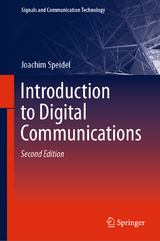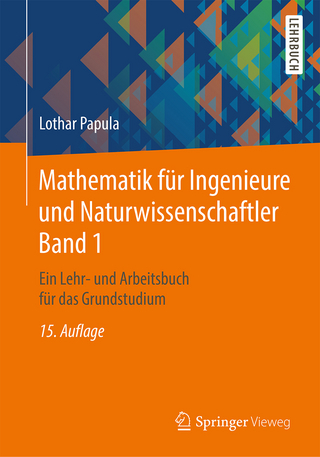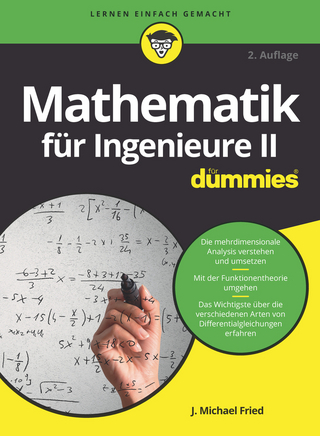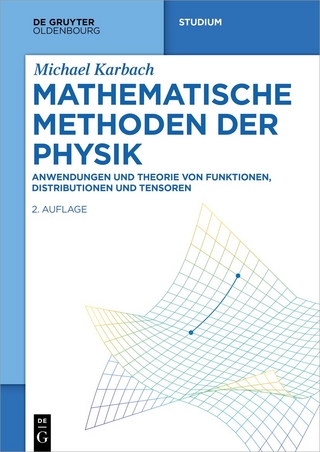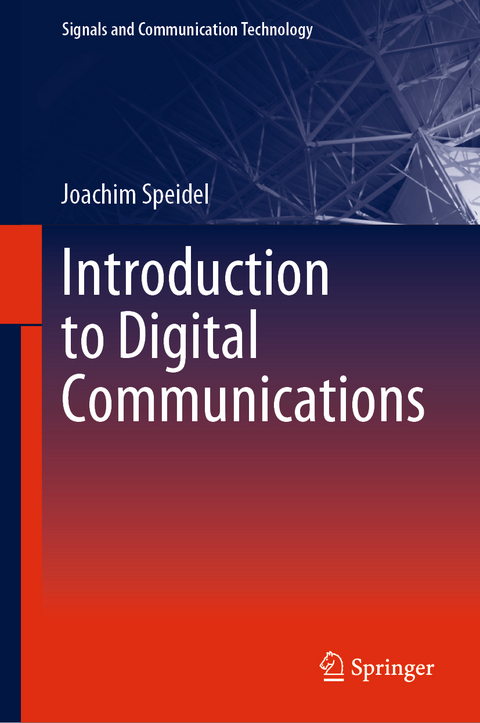
Introduction to Digital Communications
Springer International Publishing (Verlag)
978-3-030-00547-4 (ISBN)
- Titel erscheint in neuer Auflage
- Artikel merken
Joachim Speidel earned his engnineering degree with a specialization in theoretical telecommunications from the University of Stuttgart in 1975 followed by a PhD in 1980. From 1980-1992 he worked for Philips Kommunikations Industrie AG (today Alcatel Lucent). In 1985, while working as a development engineer, he and his team built the first video encoder for 2 megabit/s and played an important role in the standardization of new methods. His work in research and development covers a wide range of areas such as video and subscriber systems. During his time at Philips he held various positions including development engineer, lab manager, general manager and director of a product area. In 1992 he became a Professor at the faculty of Computer Science, Electrical Engineering and Information Technology at the University of Stuttgart and was appointed Director of the Institute of Telecommunications. His research area includes telecommunications in wireless, fixed, electrical and optical networks with focus on encoding, modulation, detection and MIMO systems. In 2013 he passed on leadership of the institute to his sucessor, Prof. Dr.-Ing Stephan ten Brink, and now maintains a research professorship at the institute. Through his numerous publications and patents, Prof. Dr. Speidel has made extensive contributions in the advancement of the field of telecommunications, the success of its products and international standards. He is a member of various national and international organisations and advisory and review boards.
Part I: Digital communications over single input single output channels.- PART II: Theory of linear time-variant systems.- PART III: Multiple Input Multiple Output wireless transmission.
| Erscheinungsdatum | 13.10.2018 |
|---|---|
| Reihe/Serie | Signals and Communication Technology |
| Zusatzinfo | XVII, 330 p. 69 illus., 28 illus. in color. |
| Verlagsort | Cham |
| Sprache | englisch |
| Maße | 155 x 235 mm |
| Gewicht | 679 g |
| Themenwelt | Mathematik / Informatik ► Mathematik ► Angewandte Mathematik |
| Technik ► Elektrotechnik / Energietechnik | |
| Technik ► Nachrichtentechnik | |
| Schlagworte | Equivalent time-variant baseband system • Frequency flat MIMO channel matrix • Intersymbol interference reduction • Mathematical description of time-variant systems • Maximum likelihood detection • MIMO channel capacity • MIMO system with precoding • Multipath wireless channel • Multi-user MIMO and multi-user interference • Nyquist criterion for data transmission • Random variables and noise in communications • Rayleigh fading channel • space-time coding • Symbol-by-symbol and sequence detection • Time-variant generalized convolution • Time-variant impulse response • Time-variant transfer function • Viterbi Algorithm • Wide-sense stationary uncorrelated scattering • Zero-forcing and minimum mean squared error receiv • Zero-forcing and minimum mean squared error receiver |
| ISBN-10 | 3-030-00547-X / 303000547X |
| ISBN-13 | 978-3-030-00547-4 / 9783030005474 |
| Zustand | Neuware |
| Haben Sie eine Frage zum Produkt? |
aus dem Bereich
